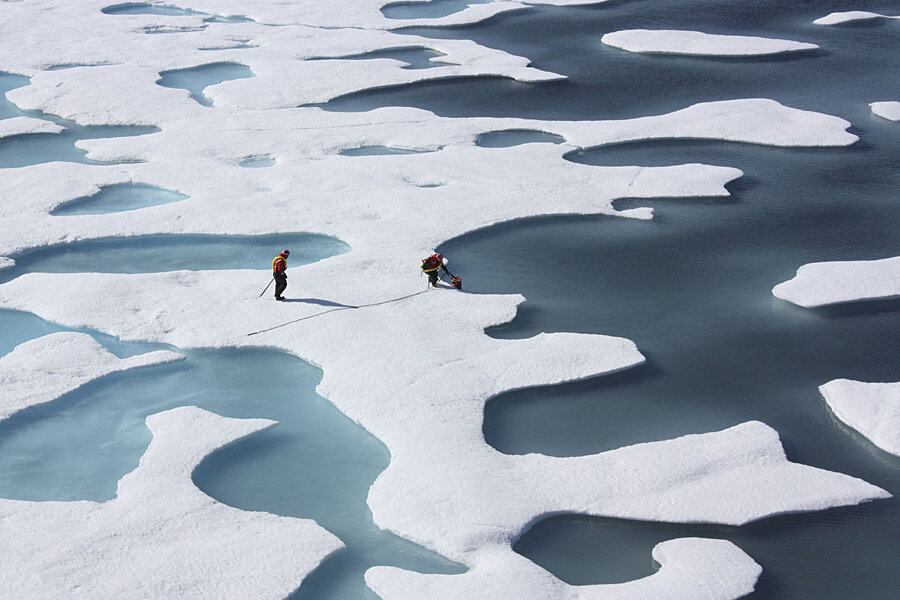Melting Arctic opens new routes for energy shipping
Loading...
Rising global temperatures are melting Arctic sea ice, so much so that some companies are now viewing the Arctic Ocean as a major shipping route for energy supplies.
The Wall Street Journal published an article on July 9 that detailed a joint venture between two major Asian companies seeking to ship liquefied natural gas (LNG) through the Arctic Ocean. Mitsui OSK of Japan and China Shipping Development Company announced a combined investment of $932 million on three LNG carriers that could handle the rough icy waters of the far north.
China and Japan promise to be huge buyers of LNG in the coming years. China, with its cities suffocating from air pollution, is seeking to replace much of its coal fleet with cleaner burning natural gas. And Japan – which has long been the world’s largest importer of LNG – is still heavily dependent on LNG imports with its 48 nuclear reactors still offline.
China and Japan continue to scour the world for new LNG supplies, and melting sea ice has opened up the option of the Arctic Ocean. The three LNG ships ordered by Mitsui and China Shipping Development will be equipped with ice breaking capability in order to plough through chunks of ice. The objective is to export natural gas from the Yamal LNG project that Russia is building in the Arctic Circle, ship it via the Northern Sea Route (NSR) along Russia’s northern coastline, and on to China and Japan.
The route between Russia and Asia via the Arctic would theoretically cut down on shipping times, and thus cost. “The shorter distance would be good for buyers, by cutting shipping costs and reducing other risks,” Yu Nagatomi, an economist at the Institute of Energy Economics, told the Wall Street Journal.
But there are several reasons to think that the role of the Arctic in shipping could be vastly overblown.
First, even with ice breaking capability, LNG carriers would only be able to transit the Arctic Ocean in summer months, a fact that even Mitsui OSK conceded. (Related Article: China, Russia and East Siberian Natural Gas)
And according to Malte Humpert, Executive Director of The Arctic Institute, the economic savings of shipping LNG via the Arctic are questionable. “There are a number of factors: seasonality, geography, and market conditions, being the most important, which will prevent the route from becoming a major transit route let alone reshape global LNG trade,” he said in an email.
Humpert says that much of the LNG is destined for Chinese ports, where distance savings over the traditional route via the Suez Canal will be less significant in comparison with Japanese or South Korean ports.
In other words, by traveling the NSR, ships can achieve a 40 percent savings in distance if they are destined for Japan or Korea, but only cut down on 20 percent of the distance if heading for Chinese ports. And after factoring in the additional cost of ice breaking technology, and the narrow window of time in the summer when ice retreats, the benefits of the NSR becomes less certain, he argues.
Moreover, shipping in the Arctic Ocean is still dangerous, and oil and gas companies don’t have solid response plans for dealing with an oil spill or other emergency. Shipping in summer months does not mean the route is entirely ice-free. Softer first-year ice – ice that only formed the previous winter – melts in summer months. But harder multi-year ice, which represents the greatest danger to shipping, remains. That means that traveling on top of the ice is not possible in the summer, but emergency response ships would face challenges navigating through broken up sea ice at the same time.
To be sure, LNG shipping via the Arctic Ocean will likely grow. Only four ships traveled the NSR in 2010; that number jumped to 71 ships last year. Once the Yamal LNG project is completed, shipments will surely rise. The project will have the capacity to ship 16.5 million tons of LNG per year.
But the route through the Arctic Ocean will remain limited to seasonal shipments, and only to ports that can significantly save on costs relative to traditional routes like the Suez Canal. “Apart from these niche opportunities,” Humpert writes in a 2013 report on Arctic trade, “Arctic shipping routes will be unable to compete with the world’s existing major trade routes.”
Source: http://oilprice.com/Energy/Natural-Gas/Can-the-Arctic-Reshape-Global-LNG-Shipping.html







